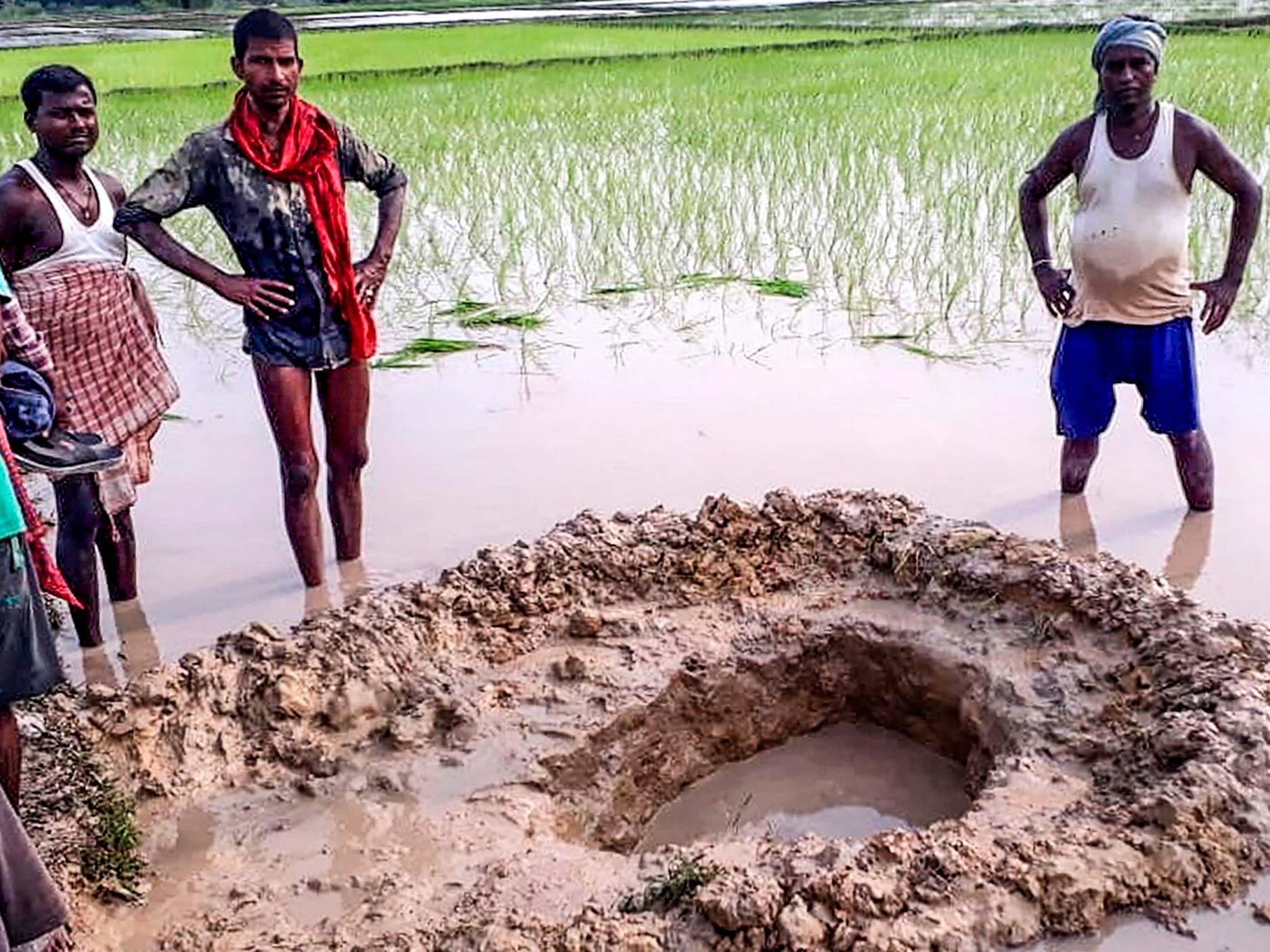‘Meteorite’ smashes into field in India
Farmers flee as magnetic rock plummets from sky

Your support helps us to tell the story
From reproductive rights to climate change to Big Tech, The Independent is on the ground when the story is developing. Whether it's investigating the financials of Elon Musk's pro-Trump PAC or producing our latest documentary, 'The A Word', which shines a light on the American women fighting for reproductive rights, we know how important it is to parse out the facts from the messaging.
At such a critical moment in US history, we need reporters on the ground. Your donation allows us to keep sending journalists to speak to both sides of the story.
The Independent is trusted by Americans across the entire political spectrum. And unlike many other quality news outlets, we choose not to lock Americans out of our reporting and analysis with paywalls. We believe quality journalism should be available to everyone, paid for by those who can afford it.
Your support makes all the difference.A suspected meteorite – glittering, magnetic and weighing more than 10kg – startled farmers when it crashed into a paddy field by an Indian village on Monday evening.
Some men were working in the field in Mahadeva village, Bihar state, when the object fell out of the sky.
“A group of farmers were working in the fields when they heard an unusually loud thud,” said Shirsat Kapil Ashok, a district magistrate, according to The Wire India.
“When they looked around to find the source of the sound, they spotted the object lying in a hole – about five feet deep – that was dug into the ground by the impact of the fall.”
Onlookers said the suspected meteor sent up smoke and caused people nearby to flee, according to the AFP news agency.
The villagers dug the object out and handed the the rock, which is magnetic, to local government officials.
“We have written to the state’s principal secretary, science and technology department, informing him about this peculiar object that looks like a piece of rock but its glitter is much more than that of an unpolished stone. Its magnetic pull makes it even more intriguing,” Mr Ashok said.
“However, we need to wait till the department sends experts who can study the object and arrive at a definitive conclusion.”
Meteoroids are objects in space which range in size from dust grains to small asteroids, according to Nasa.
When these so-called “space-rocks” survive the trip through the Earth’s atmosphere and arrive on the ground, they are known as meteorites.
Relatively small meteorites, where the rock measures only a few metres across at most, are thought to be relatively common.
The Earth’s terrestrial record of larger impacts is unclear, because craters are often obliterated by erosion, burial and plate tectonics.
Additional reporting by agencies
Join our commenting forum
Join thought-provoking conversations, follow other Independent readers and see their replies
Comments